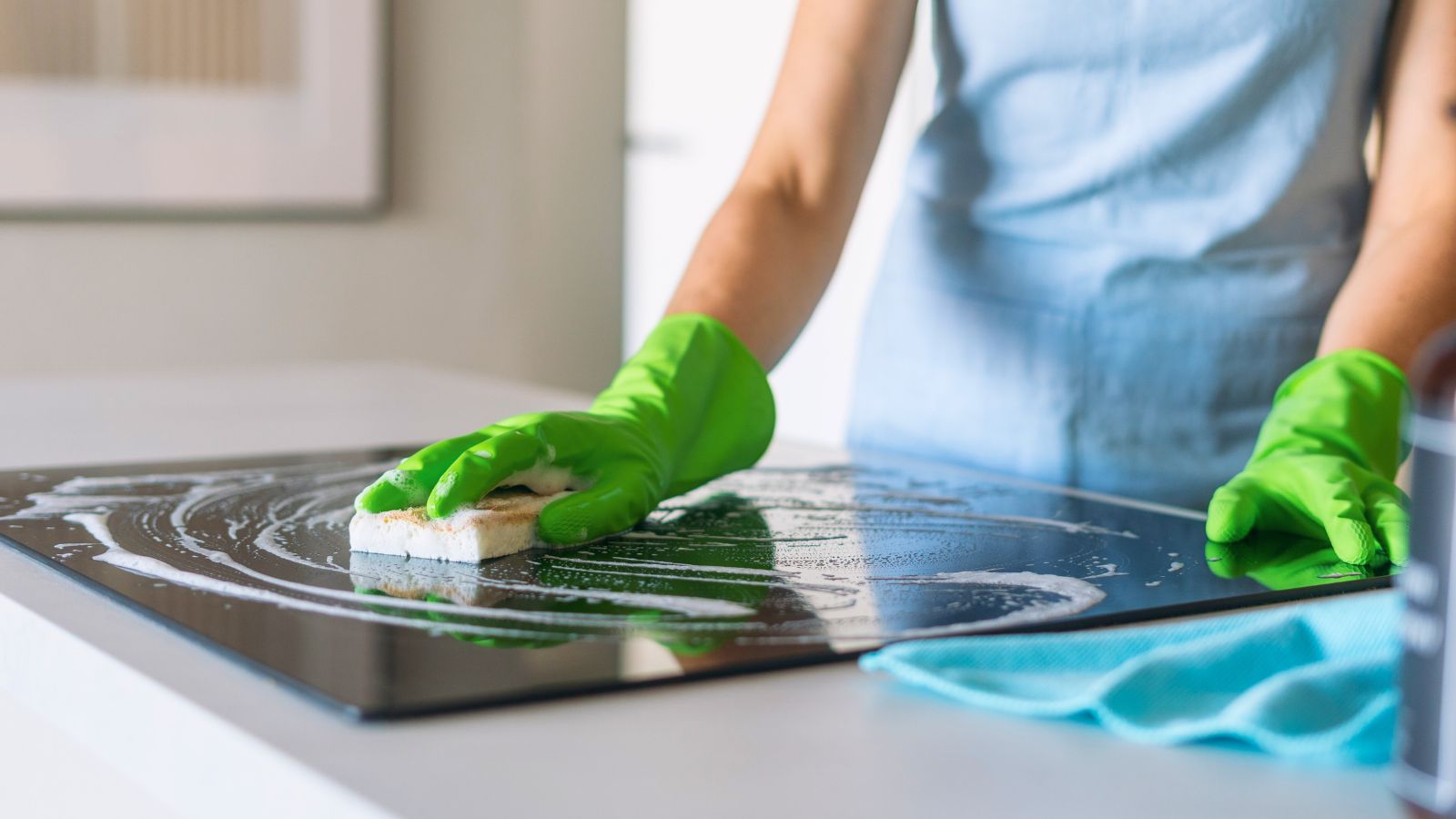7 easy methods for removing weeds from a patio – plus two that are best avoided if you don't want to damage your paving or plants
Keep your patio weed-free with these expert tips to get rid of anything that pops up where it shouldn't
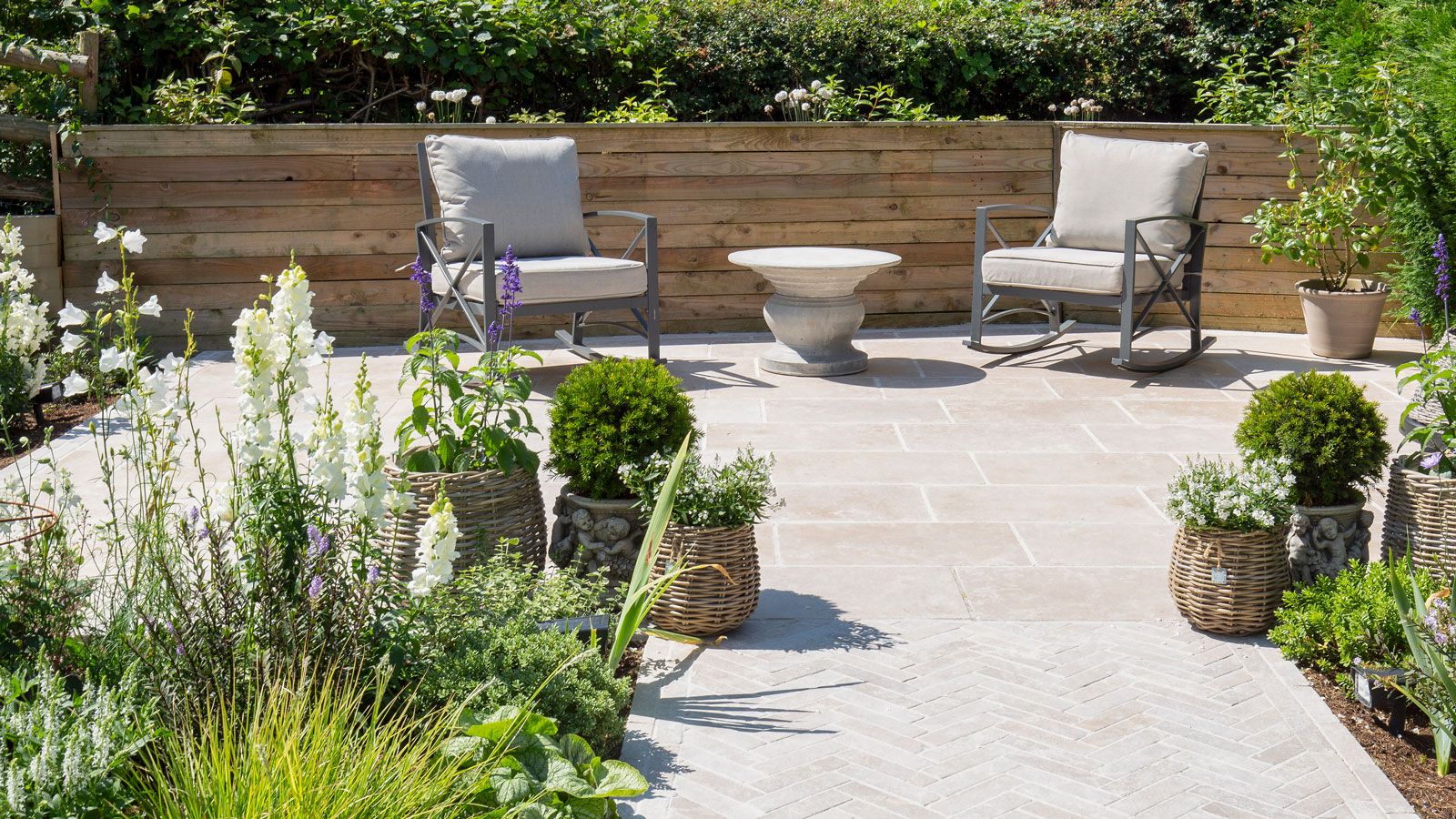
Removing weeds from a patio is one of those annoying but essential jobs you need to keep on top of if you want your outdoor space to be at its best. It's easy to keep a new patio weed-free and looking good for the first couple of years, but once your patio has been established for a while all it takes is one hot and rainy summer (or one cold winter to crack the pointing) to create the perfect conditions for weeds to take over.
Once weeds get settled into the cracks between paving slabs it can turn into a time-consuming job getting rid of them. Once comfortable, weeds will cast their seeds around and quickly spread from your patio into nearby pots and planters too.
Our gardening experts reveal the best methods for how to kill weeds and remove them from your patio so you can can get it back to looking immaculate again.
1. Use a natural weedkiller
As well as being good for cleaning some types of patio paving, white vinegar is also a popular powerful and natural weed killer. But avoid using it on natural stones like limestone, as it will react and mark the surface.
"White vinegar, a small amount of salt, and some washing up liquid can be mixed with water in a bottle and sprayed on weeds," says professional gardener Jane Dobbs, who heads up the team at Allan's Gardeners. "Although it will kill foliage instantly, it may not reach deep roots, so you will need to repeat as necessary." Shake the contents well before use to make sure that the solution is thoroughly mixed.
Using this method works best for shallow-rooted new weeds that have popped up through your garden paving. It's essential your plants don't come into contact with the vinegar solution, as it will kill anything it touches, so apply very carefully. Within a couple of days, most weeds should have died.
You can also use the spray as a preventative measure every couple of weeks to make sure the weeds don't come back. This white vinegar for weed control from Amazon is inexpensive and would do the trick.
Bring your dream home to life with expert advice, how to guides and design inspiration. Sign up for our newsletter and get two free tickets to a Homebuilding & Renovating Show near you.
You could also use this method for stopping weeds in block paving.

Jane Dobbs is responsible for leading the gardening team at Allan's Gardeners. She was promoted to team leader a couple of years ago, and her work is her passion. She has been a professional gardener for 10 years.
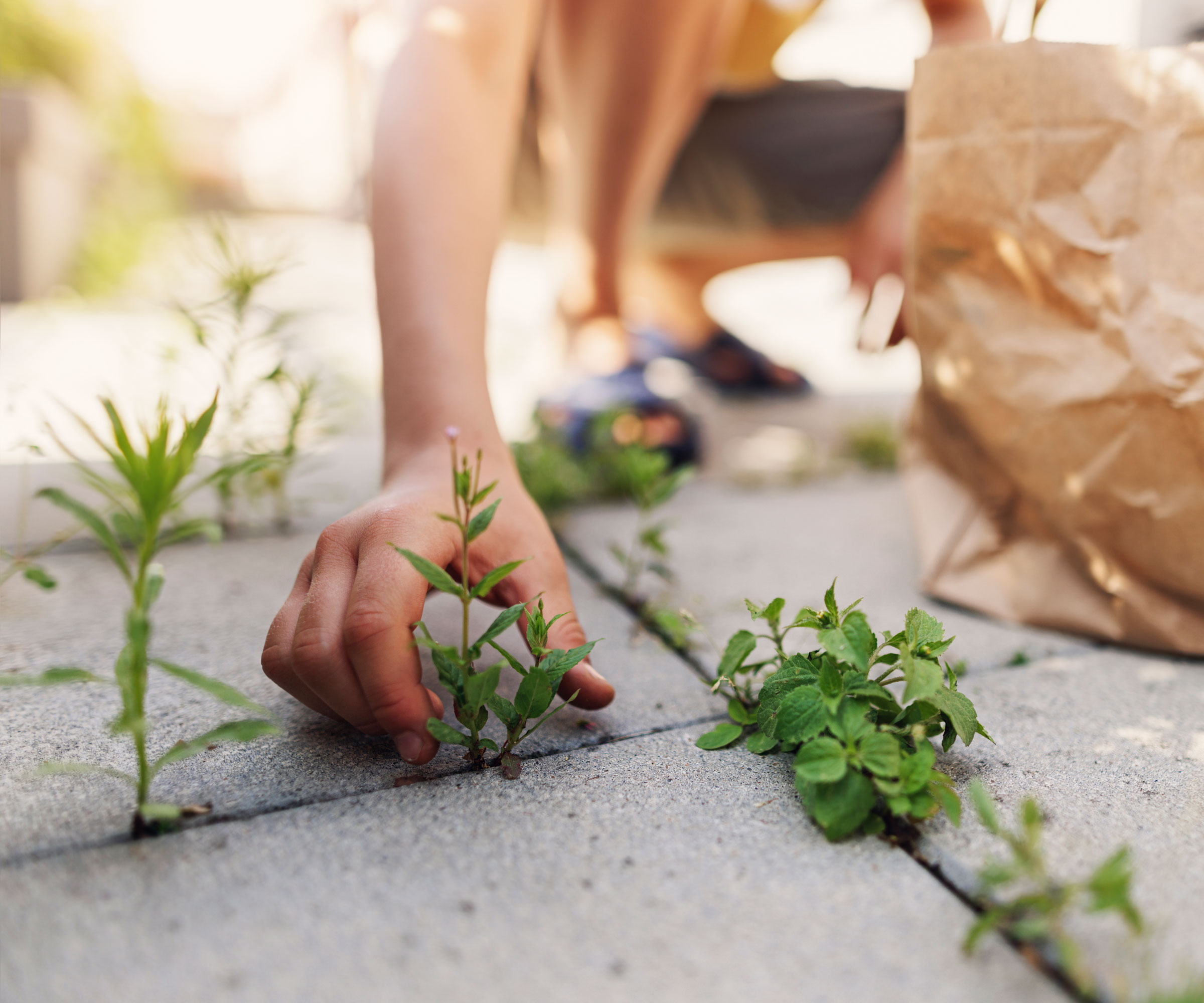
2. Remove weeds by hand
Weeding by hand costs nothing and is actually quite a rewarding activity once you get stuck into it. The key to success is to make sure you remove every single part of each weed plant, as well as using the right tools.
"To avoid using pesticides or chemicals, use a weeding knife to carefully remove weeds from tight gaps in your patio," says patio and landscaping expert Mark Irving, from Build & Plumb. "Run the blade of the knife through weedy cracks of the patio, and gently hook and pull out the weeds. Make sure you pull hard to remove as much of the root as possible and prevent the weeds from growing back."
Invest in a handy tool, such as this Fiskars weeding knife from Amazon, which is ideal for using between paving stones. "This is an effective way to remove weeds while preventing damage to the surface of the patio," adds Mark. "Once the weeds have gone, use a soft bristled brush to remove any remaining dirt and debris”.
Spring and early summer is the best time to get on with this job before the weeds start to take over your patio.

With over 20 years' experience in the building sector, building and landscaping expert Mark Irving led Build & Plumb’s expansion into the online market, and now oversees its multi-million-pound operation. Build & Plumb is a leading online retailer, supplying top-quality products for DIYers, renovators, home builds and trade professionals.
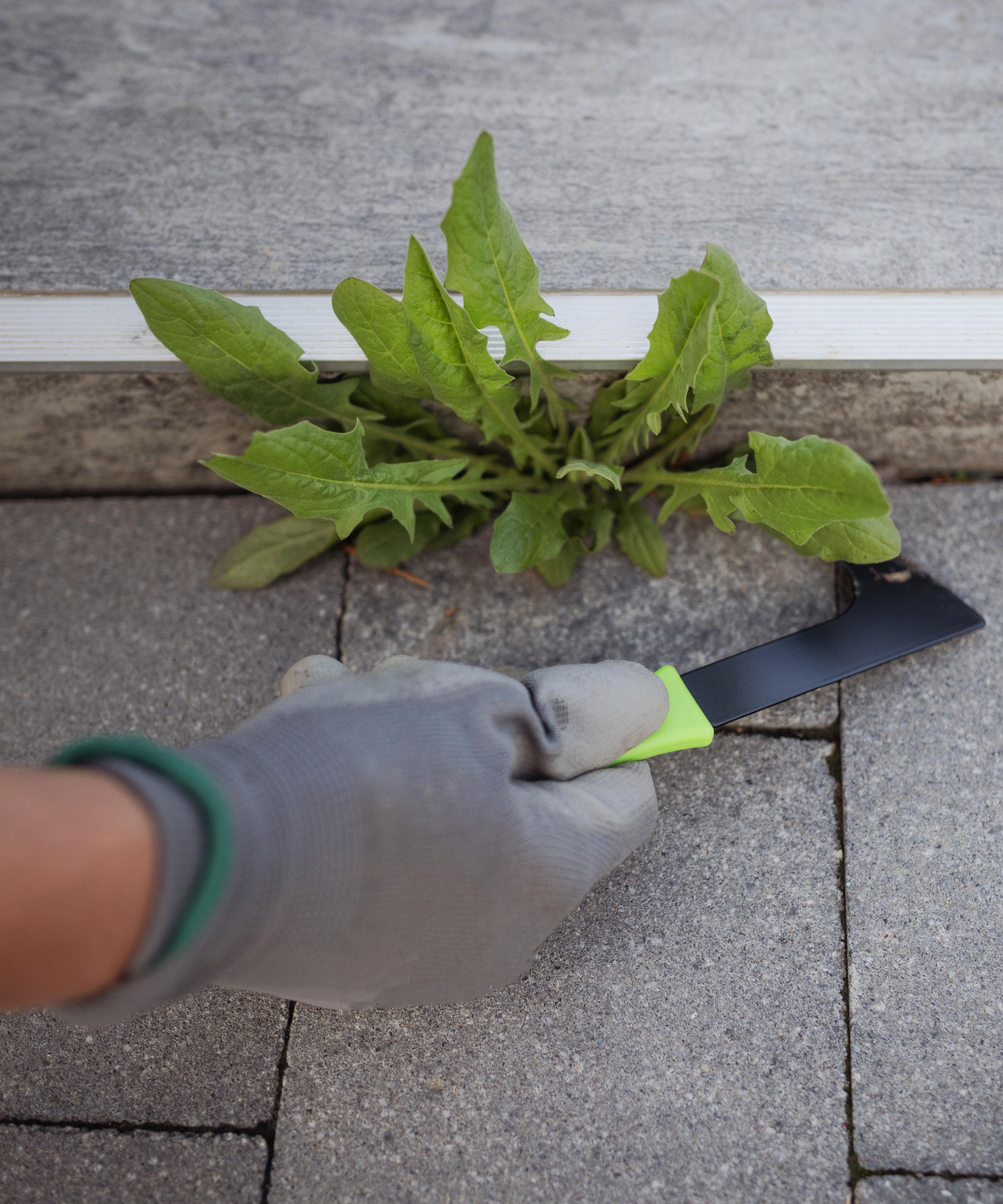
3. Pour boiling water onto weeds
This method has been used for years and is a popular one, especially as it's free and so easy to do. It's a good choice for removing weeds from a patio as generally the boiling water won't come into contact with any of your plants.
“Boiling water is an easy and straightforward method for removing weeds from a garden patio," says Mark. "Simply pour the boiling water on the patio weeds, making sure you douse the entire weed and surrounding area until it’s fully saturated."
You may have to repeat this process several times until the weeds stop resprouting. This is especially true in the case of weeds like dandelion that have super-thick, fleshy roots, meaning they are harder to shift.
When pouring the boiling water be extremely careful and only pour from a short height, to avoid any mishaps.
4. Use a patio cleaner
"Whether your patio is laid with natural stone, porcelain paving, brick or concrete slabs, there needs to be some thought put into the regime to keep it looking good," says Dr Jonathan Kirby, paving expert at Roxil.
"Patios will inevitably show some form of weed growth, or mould, algae or lichen, especially over the wet winter and spring months," he adds. "This can quickly make even the most meticulously installed patio look unkempt. I recommend first pulling out larger weeds, then leaving a patio cleaner on the surface for 24 hours, such as Roxil Wood & Patio Cleaner, available from Amazon. Then use a wet stiff brush to loosen any stubborn weed patches as well as mould and dirt before washing away the debris."
To make your life easier in future, Jonathan recommends waterproofing the surface since weeds and biological growth need moisture to grow, and it’s a simple maintenance step that's easy to do. "Using a patio weatherproofing cream, such as Roxil Patio Cream, creates a waterproof barrier without changing its appearance, and by keeping it dry and helping to prevent weed growth."
Using a targeted cleaner can also be an effective way of removing algae from patio slabs.

Dr Jonathan Kirby is a developmental chemist and paving expert at Roxil. From landscaping to masonry protection, he has dedicated himself to helping protect UK housing stock through the development of new and innovative materials.
5. Grout between the pavers
"The most effective way to prevent weeds between slabs is to always use grout when laying a patio, rather than just brushing sand between the slabs," says paving expert Isabel Fernandez of Quorn Stone. "This will avoid weeds and other debris collecting between the slabs, and makes it much easier to maintain and keep clean."
Pointing patios is easy to do as a DIY job and will help make sure your patio stays weed-free for years to come.

Isabel Fernandez is marketing director at Quorn Stone, and carries a wealth of experience and expertise from sourcing premium tiles globally, to leading the brand's growth and awareness. With a first-class honours degree in business management and marketing, Isabel has played a pivotal role in the expansion of Quorn Stone since she joined in 2016.
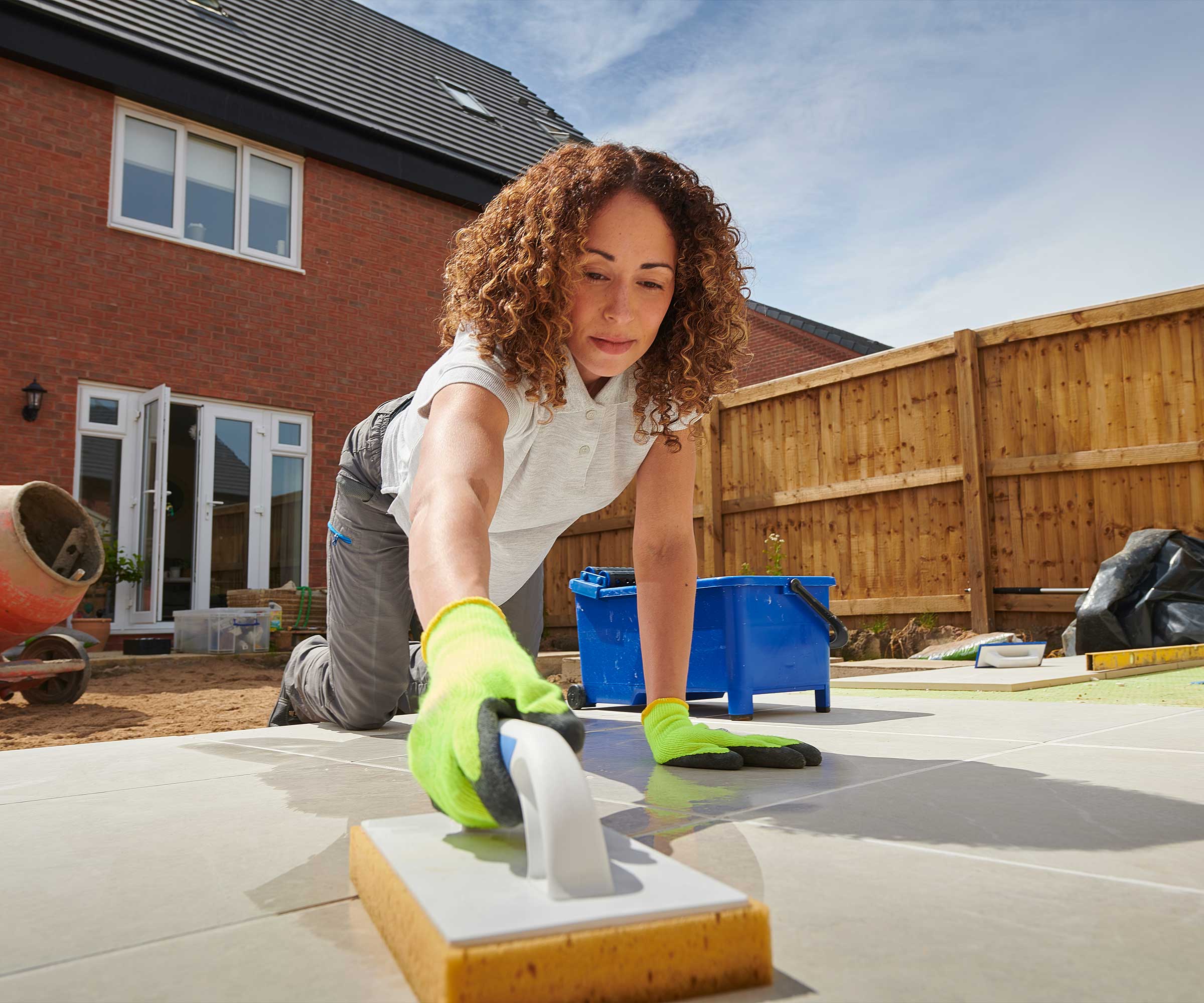
6. Try a weed flame gun
It might sound a bit drastic but flame weeding can be a safer method to deal with weeds than chemicals that can contaminate groundwater and leave toxic residue in your garden as well as potentially damaging your patio planting.
"A weed flame gun is ideal for dealing with weeds in patio paving," says Jane Dodds. "It uses intense heat to kill weeds. It works instantly and is chemical-free, but be careful not to damage nearby plants or start a fire." Generally a weed flamer like this DIVCHI Weed Burner from Amazon consists of a simple wand connected to a propane tank by a hose. Always read the instructions carefully before use.
It works by passing a flame over the weed to briefly expose it to the heat and kill the plant tissue. Annual weeds are easier to get rid of using this method but perennial weeds may need several treatments to deal with the roots.
7. Opt for an electric weed remover
Electric weed removers are a great tool for the garden as they offer convenience and efficiency in removing weeds from hard surfaces like patios, as well dealing with any debris that may build up in the cracks. They’re also more environmentally friendly than traditional weed killers, particularly those that use harsh chemicals.
"A lot of models are now cordless, which offers flexibility and ease of use," says Laura Bradbury, head of eCommerce at VonHaus. "Most come with comfortable grips and handles that make them easier to use for extended amounts of time."
Some models come with different brush options, explains Laura, allowing you to tackle a variety of weeds in different places, so you’re not just stuck with one brush for your whole garden. This VonHaus cordless electric weed remover from Amazon is lightweight, easy to use and comes with three interchangeable brushes.

Laura Bradbury is Head of Ecommerce at online homeware and garden retailer VonHaus, and is responsible for developing and growing the brand.
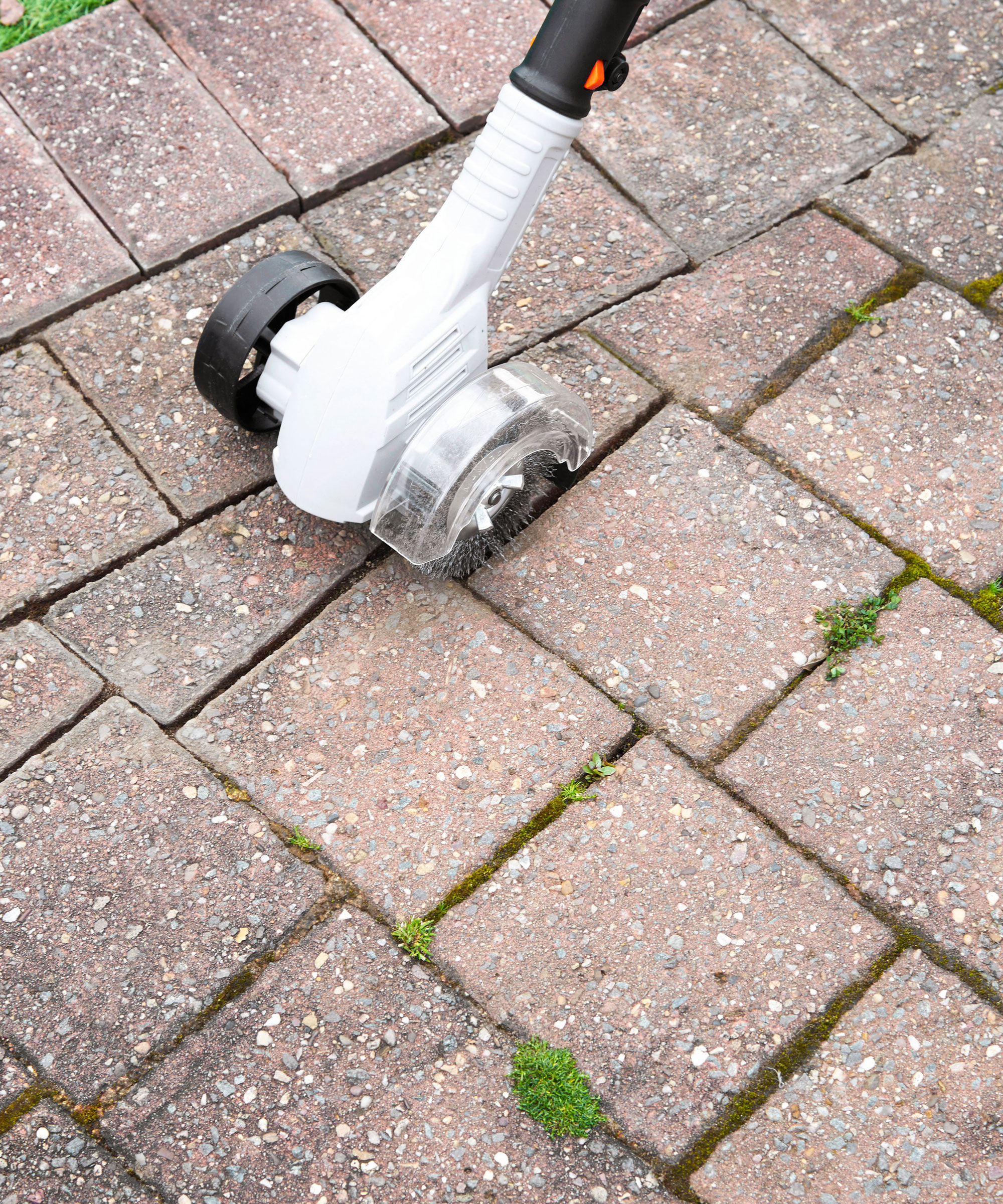
FAQs
Should I use a pressure washer to remove weeds from a patio?
"A common patio weed removal method is to use a pressure washer but think again," says Dr Jonathan Kirby. "They can produce impressive results when it comes to cleaning patio slabs, but frequent use can cause long-term problems such as surface erosion, damage to weak points in the slabs, and damage to mortar joints. This leaves the surface of your patio more likely to suffer from weed growth issues in the future."
There's another problem too. "A high-pressure washer can blast away surface weeds, moss and algae from patios but it doesn’t kill the roots," says Jane Dobbs. "So if you're going to use one it’s best to combine it with another method. You can use a narrow spray nozzle for deep crevices, then follow up with boiling water or a natural weedkiller to target roots."
Are chemical weedkillers a good way to remove weeds from a patio?
“Many weedkillers can be harmful to plants, grass and local wildlife, something which is best avoided if you value a biodiverse garden," says Hayter gardening expert Chris Cooper. "As a general rule, the less-damaging weedkillers have ‘garden-safe’ somewhere on the bottle, usually on the front.
“General weedkillers are non-selective, which means they won’t distinguish between what’s a weed and what’s grass, or a flower, or a shrub. Even if your patio isn’t near your plants, it's best practice to avoid all non-selective weedkillers to keep your garden both plant-safe and animal-safe.”
As with most garden tasks, little and often can be the best option for keeping on top of a weed problem on your patio. Spending a few minutes each week dealing with weeds can keep the problem at bay and save you time in the long run.
Use the same approach when cleaning decking or cleaning fences to ensure you stay on top of any issues and keep your outdoor space looking its best.

Lifestyle journalist Sarah Wilson writes about garden design and landscaping trends. She has studied introductory garden and landscape design, and also has an RHS Level 2 qualification in the Principles of Plant Growth and Development. Sarah is a regular contributor to Homes & Gardens and Livingetc, and has also written for Modern Gardens, Country Living, and Country Homes & Interiors magazines.
